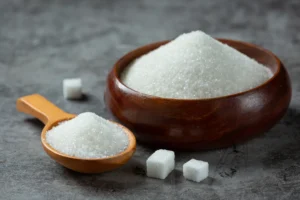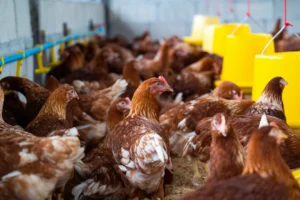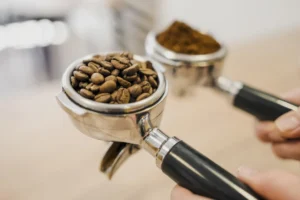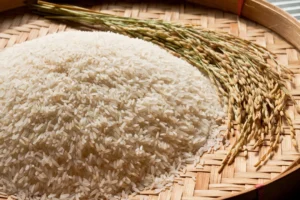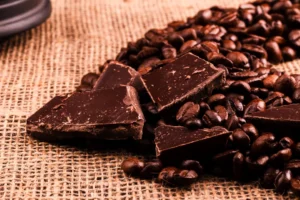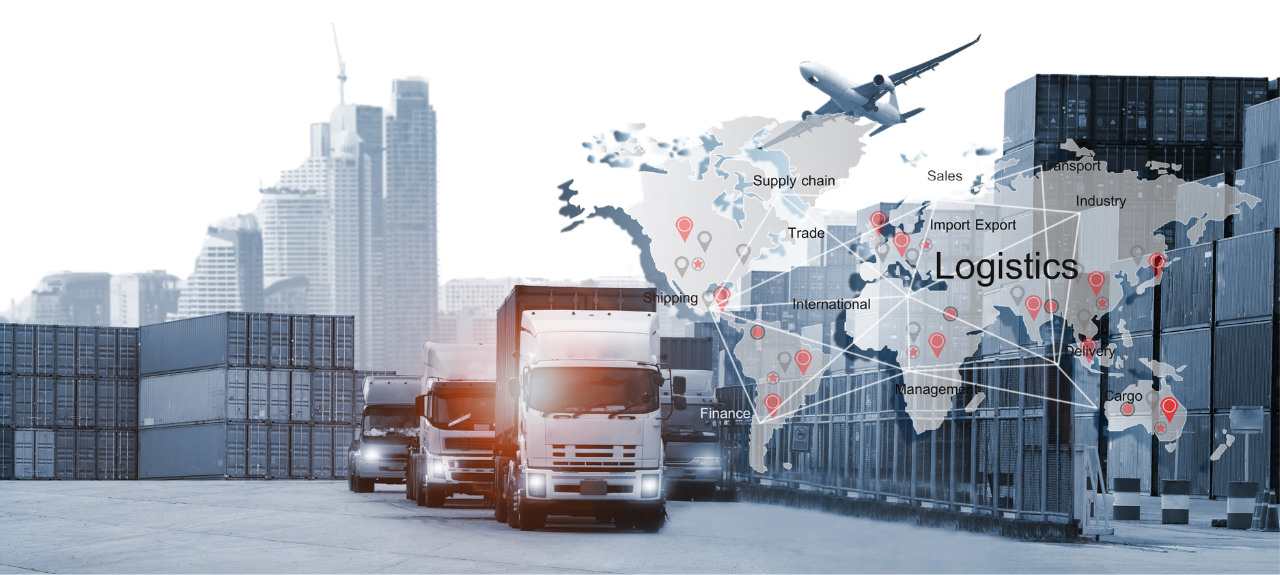The global sugar market in 2025 is experiencing unprecedented volatility as multiple disruptive forces converge to create supply uncertainties and price fluctuations across international markets. After several years of relative stability, sugar prices have surged dramatically, with raw sugar futures reaching multi-year highs in the first quarter of 2025. This price rally represents the culmination of several interconnected factors: severe weather events affecting major producing regions, evolving biofuel policies redirecting sugarcane toward ethanol production, and significant shifts in trade policies among key market participants. For consumers, food manufacturers, and commodity traders alike, these developments have created a challenging environment requiring careful navigation and strategic adaptation.
Climate disruptions have emerged as perhaps the most immediate and visible factor affecting global sugar production in 2025. Brazil’s Center-South region, responsible for approximately 20% of global sugar production, has experienced its second consecutive year of below-average rainfall, with precipitation deficits of 25-30% during critical growing periods. These drought conditions have not only reduced overall sugarcane yields but also affected sugar content levels within the harvested cane. Similarly, India, the world’s second-largest producer, has faced irregular monsoon patterns that damaged crops in major growing states including Maharashtra and Karnataka. These weather-related production shortfalls in key regions have removed an estimated 7-8 million metric tons from global supply projections for the 2024/25 marketing year, creating a significant deficit relative to global consumption.
Beyond these immediate climate impacts, structural changes in market dynamics and trade policies have amplified price volatility. Brazil’s renewed emphasis on ethanol production, driven by both environmental policies and favorable economics relative to gasoline, has diverted a larger portion of the sugarcane harvest away from sugar production. Meanwhile, India’s export restrictions, implemented to protect domestic supplies amid production concerns, have removed a significant volume from international markets that had become accustomed to Indian exports as a reliable supply source. These policy decisions, while rational from national perspectives focused on energy security and domestic food supplies, have collectively reshaped global sugar trade flows and created additional uncertainty for market participants attempting to secure reliable supplies at predictable prices.
Climate Change: Transforming Production Landscapes
The climate challenges affecting sugar production in 2025 represent more than temporary weather anomalies; they reflect the increasing impact of climate change on agricultural systems worldwide. In Brazil, meteorological data indicates that rainfall patterns in key sugarcane regions have become increasingly erratic over the past decade, with more frequent drought periods interspersed with episodes of excessive precipitation that complicate harvesting operations. Agricultural researchers note that these changing patterns are forcing adaptations in planting schedules, variety selection, and irrigation strategies, with significant implications for both yields and production costs.
Thailand, traditionally the world’s second-largest sugar exporter, has similarly faced climate-related challenges that have reduced its export availability in 2025. Delayed monsoon rains followed by flooding in northeastern growing regions damaged both standing cane and newly planted areas, reducing production potential for both the current and upcoming seasons. Thai sugar industry associations report that approximately 15% of planted area experienced significant flood damage, while drought in other regions reduced yields by 10-20% compared to historical averages. These combined impacts have reduced Thai export availability by approximately 2 million tons compared to previous projections, further tightening global supply.
European beet sugar production, while less prominent in global trade than tropical cane production, has also faced climate challenges in 2025. Unusually warm and dry conditions during the growing season across parts of France, Germany, and Poland reduced both beet yields and sugar content. Additionally, restrictions on certain crop protection products, implemented as part of the European Union’s sustainability initiatives, have increased vulnerability to pest pressures in some regions. These factors have collectively reduced EU sugar production by approximately 8% compared to the previous season, limiting the bloc’s export potential and potentially increasing its import requirements.
Biofuel Policies and the Sugar-Ethanol Balance
The relationship between sugar and ethanol markets represents a critical factor in 2025’s supply dynamics, particularly in Brazil where sugarcane can be flexibly directed toward either product based on relative economics. Brazil’s renewed emphasis on ethanol production, supported by both environmental policies and energy security considerations, has significantly influenced the global sugar balance. The country’s RenovaBio program, which incentivizes biofuel production through tradable carbon credits, has been strengthened in 2025 with more ambitious carbon reduction targets that enhance the economic attractiveness of ethanol production relative to sugar.
This policy support, combined with strong domestic ethanol demand driven by Brazil’s recovering economy and competitive pricing relative to gasoline, has prompted Brazilian mills to allocate approximately 58% of harvested cane to ethanol production in the 2024/25 season, compared to a more balanced allocation in previous years. Industry analysts estimate that this shift in processing decisions has reduced Brazil’s sugar production by approximately 3 million tons compared to what would have occurred with a more sugar-oriented production mix. While Brazilian mills maintain flexibility to adjust this allocation as relative prices change, the strong structural support for ethanol suggests continued competition for sugarcane between these end uses.
Similar dynamics are emerging in other sugarcane-producing regions, including India and Thailand, where governments have expanded biofuel mandates as part of both environmental initiatives and strategies to reduce petroleum import dependence. India’s ethanol blending program has set increasingly ambitious targets, creating new domestic demand for molasses and directly competing with sugar production in some regions. These policies, while beneficial for environmental goals and rural economic development, create additional complexity for sugar market participants attempting to forecast available supplies and price trajectories.
Trade Policy Shifts and Market Access Changes
Trade policy decisions have emerged as another significant factor reshaping global sugar markets in 2025. India’s decision to restrict sugar exports, implemented through a quota system that has limited shipments to approximately 2 million tons for the 2024/25 marketing year, represents a particularly impactful policy shift. As a country that had emerged as a major exporter in recent years, shipping over 11 million tons in the 2022/23 season, India’s reduced presence in export markets has forced traditional buyers to seek alternative suppliers, often at premium prices reflecting tight availability.
This policy decision reflects India’s prioritization of domestic food security and price stability amid production uncertainties and growing internal consumption. Indian government officials have indicated that export quotas will be reassessed based on production outcomes and domestic price trends, but this conditional approach itself creates additional uncertainty for international buyers who previously relied on Indian supplies. The situation highlights how national food security considerations can rapidly alter trade patterns in agricultural commodities, particularly during periods of production stress and price volatility.
Other significant policy developments affecting 2025’s sugar market include China’s revised import framework, which has expanded access for certain preferred trading partners while maintaining restrictions on others. This approach has reshaped Asian sugar trade flows, with Thailand and Australia gaining improved access to the Chinese market while other origins face more challenging entry conditions. Similarly, post-Brexit trade arrangements continue evolving, creating new dynamics in European sugar trade as the UK implements its independent agricultural policy with different priorities than the EU’s Common Agricultural Policy.
Market Responses and Adaptation Strategies
In response to these supply challenges and price volatility, market participants throughout the sugar value chain have implemented various adaptation strategies. Food and beverage manufacturers, particularly those with sugar-intensive product portfolios, have expanded their hedging programs and lengthened contract coverage periods to reduce exposure to spot market volatility. Many have also accelerated reformulation initiatives to reduce sugar content in products where technically feasible, both as a cost management strategy and in response to continuing consumer health trends favoring reduced sugar consumption.
Sugar refiners and processors have similarly adjusted their sourcing and operational strategies to navigate the challenging market environment. Many have diversified their supply networks to reduce dependence on specific origins, accepting the logistical complexities and quality management challenges this entails to improve overall supply security. Some have also invested in additional storage capacity, enabling them to build inventory during periods of better availability rather than relying on just-in-time supply chains vulnerable to disruption.
For agricultural producers, current market conditions have generally improved economic returns after several years of challenging price environments. In regions less affected by adverse weather, farmers have responded to higher prices by expanding planted area where possible and increasing investments in yield-enhancing inputs and technologies. However, rising production costs, particularly for fertilizers and energy, have partially offset the benefit of higher sugar prices, maintaining pressure for continued efficiency improvements throughout the production chain.
Technology and Innovation in the Sugar Sector
Technological innovation offers promising avenues for addressing some of the challenges facing the sugar industry in 2025. Advanced breeding programs, including both conventional techniques and newer gene-editing approaches, are developing cane and beet varieties with improved drought tolerance, disease resistance, and sugar content. While the development and commercial deployment of new varieties requires significant time, these efforts represent important long-term responses to climate challenges affecting traditional growing regions.
Digital agriculture solutions are similarly gaining traction throughout the sugar production chain. Precision agriculture techniques utilizing satellite imagery, soil sensors, and weather monitoring systems enable more efficient resource use and better adaptation to changing environmental conditions. In Brazil’s São Paulo state, a pilot program utilizing AI-driven irrigation scheduling and variable-rate fertilizer application has demonstrated water savings of up to 20% while maintaining comparable yields, an approach now expanding to other production regions.
Processing technology innovations are also contributing to improved efficiency and sustainability throughout the value chain. Modern sugar mills have implemented energy efficiency measures and biomass utilization systems that significantly reduce both production costs and environmental footprints. Some facilities have developed integrated biorefinery approaches that produce not only sugar and ethanol but also bioplastics, specialty chemicals, and other high-value products from sugarcane, improving overall economic resilience through product diversification.
Consumer Trends and Demand Evolution
While supply-side factors have dominated 2025’s sugar market narrative, demand trends also continue evolving in ways that influence longer-term market dynamics. Health consciousness and regulatory measures targeting sugar consumption, including sugar taxes implemented in various jurisdictions and front-of-pack labeling requirements highlighting added sugars, have moderated demand growth in developed markets. Market research indicates that per capita sugar consumption in North America and Western Europe has declined by approximately 2-3% annually in recent years, a trend that has continued into 2025.
However, this moderation in traditional markets has been offset by continued consumption growth in developing economies, where rising incomes, urbanization, and the expansion of processed food availability drive increased sugar utilization. Particularly strong growth continues in parts of Asia, the Middle East, and Africa, where expanding food processing sectors and changing dietary patterns support overall demand expansion despite health-oriented policy initiatives similar to those in developed markets.
The industrial use of sugar beyond food applications represents another evolving demand factor. Bioplastics and biochemicals derived from sugar feedstocks have gained increased commercial traction as companies seek renewable alternatives to petroleum-based materials. While still representing a relatively small portion of overall sugar demand, these emerging applications are growing rapidly and could become increasingly significant market factors in coming years, potentially competing with both food uses and ethanol production for available sugar supplies.
Sustainability Challenges and Initiatives
As environmental considerations become increasingly central to agricultural commodity markets, the sugar industry faces both challenges and opportunities related to sustainability performance. Water usage represents a particular focus area, with sugarcane cultivation traditionally requiring significant irrigation in many growing regions. In response, producers have implemented more efficient irrigation systems, improved water recycling in processing operations, and explored varietal selection to reduce water requirements while maintaining productivity.
Carbon emissions represent another key sustainability consideration, with attention focused on both agricultural practices and processing operations. Reduced tillage approaches, optimized fertilizer application, and better residue management have helped reduce field-level emissions in progressive operations. Meanwhile, modern sugar mills increasingly utilize bagasse (the fibrous residue from cane crushing) for renewable energy generation, with some facilities achieving energy self-sufficiency and even exporting surplus electricity to local grids.
Labor practices and social sustainability have similarly gained increased attention, particularly as consumers and downstream customers emphasize ethical sourcing considerations. Leading producers have strengthened worker welfare programs, community engagement initiatives, and supply chain transparency measures to address these concerns. Industry-wide certification programs have expanded their coverage, though challenges remain in ensuring consistent implementation across diverse production regions with varying regulatory frameworks and enforcement capabilities.
Outlook and Strategic Considerations
Looking ahead, the global sugar market appears likely to remain volatile through 2025 and potentially beyond as structural challenges persist. Climate variability will continue creating production uncertainties in key regions, while policy interventions—both related to biofuels and trade—add another layer of complexity for market participants. The International Sugar Organization projects that global stocks-to-use ratios will remain below historical averages through at least the 2025/26 marketing year, suggesting continued price sensitivity to any additional supply disruptions.
For businesses throughout the sugar value chain, these conditions underscore the importance of robust risk management strategies, supply chain visibility, and operational flexibility. Companies with diversified sourcing networks, strong supplier relationships, and sophisticated market intelligence capabilities will be best positioned to navigate continuing volatility while meeting their business requirements. Similarly, producers and processors investing in climate resilience, operational efficiency, and sustainability performance will likely gain competitive advantages as these factors become increasingly central to market dynamics.
Policy developments will remain critical to monitor, particularly regarding biofuel mandates, export restrictions, and environmental regulations affecting production practices. The interaction between sugar and energy markets will continue influencing price relationships and production decisions, especially in Brazil and other regions with flexible processing capabilities. These complex interconnections highlight the importance of comprehensive market analysis that considers factors beyond traditional supply-demand fundamentals.
Navigating Sugar Market Complexity with Expert Partners
In this environment of unprecedented sugar market volatility and structural transformation, having knowledgeable and experienced trading partners has never been more valuable. Despite the extraordinary challenges facing global sugar markets in 2025, Sax Trading continues providing reliable sourcing solutions through its extensive network and market expertise. By leveraging deep understanding of both fundamental market dynamics and policy developments across key producing regions, Sax Trading helps clients secure the supplies they need even in tight market conditions.
Whether you’re a food manufacturer requiring consistent sugar supplies, a beverage producer concerned about quality specifications and price stability, or a distributor serving specialized market segments, today’s complex sugar market demands strategic sourcing partnerships. Sax Trading’s sugar specialists understand the nuanced quality requirements, logistical considerations, and regulatory factors specific to different market segments and can develop customized solutions aligned with your business objectives.
Contact Sax Trading today for a free consultation and discover how our expertise in global sugar markets can help your business thrive despite current volatility. Our team will analyze your specific requirements and develop tailored strategies that ensure supply security, optimize costs, and effectively manage risk in this challenging market environment.


